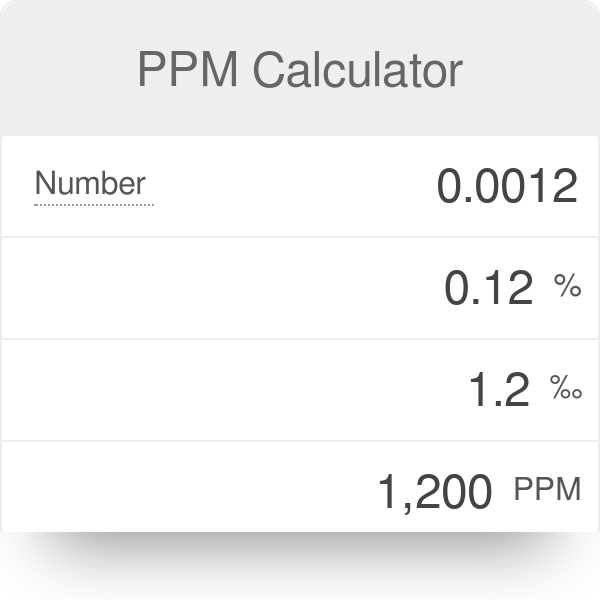

These expressions represent like units, such as grams per 1000 grams (ppt) or grams per 1000000 grams (ppm). Common parts per expressions in aquatic science are parts per thousand (ppt), parts per million (ppm), and parts per billion (ppb). “Parts per” notation is one way of expressing how much solute is in a solution. In other words, 1 parts per thousand is 1000 times bigger than a part per million. The formula used in parts per thousands to part per millions conversion is 1 Parts per Thousand = 1000 Part per Million.

Ppt stands for parts per thousands and ppm stands for part per millions. For example, 10ppb multiplied by 1000is equal to 10000ppt. With that knowledge, you can solve any other similar conversion problem by multiplying the number of Parts-Per-Billion (ppb) by 1000. To convert Parts-Per-Billion (ppb) to Parts-Per-Trillion (ppt), you just need to know that 1ppb is equal to 1000ppt. One part per trillion is equivalent to one nanogram per kilogram. Convert the mass in grams to a mass in milligrams: mass NaCl = 0.0045 g = 0.0045 g × 1000 mg/g = 4.5 mg.Ī concentration of one part per trillion means that there is one part of that substance for every one trillion parts of either air, water or soil in which it is contained.Extract the data from the question: mass solute (NaCl) = 0.0045 g.Write an equation representing the ppm concentration: ppm = mass solute (mg) ÷ volume solution (L).Parts Per Million (ppm) Concentration Calculations How do you calculate concentration in parts per million? In the case of a mass ratio of 0.000005, this would give 5,000 ppb. How do you express concentration in parts per billion?Ĭalculate the concentration in ppb by multiplying the ratio of the mass of solute to mass of solution by 1 billion, or 1,000,000,000. Because ppm and ppb are actually fractions when expressed as numbers, and the “million” and “billion” go in the denominator, so ppm needs to register in your mind as being a thousand times greater in concentration than ppb (regardless of the specific units used).


 0 kommentar(er)
0 kommentar(er)
